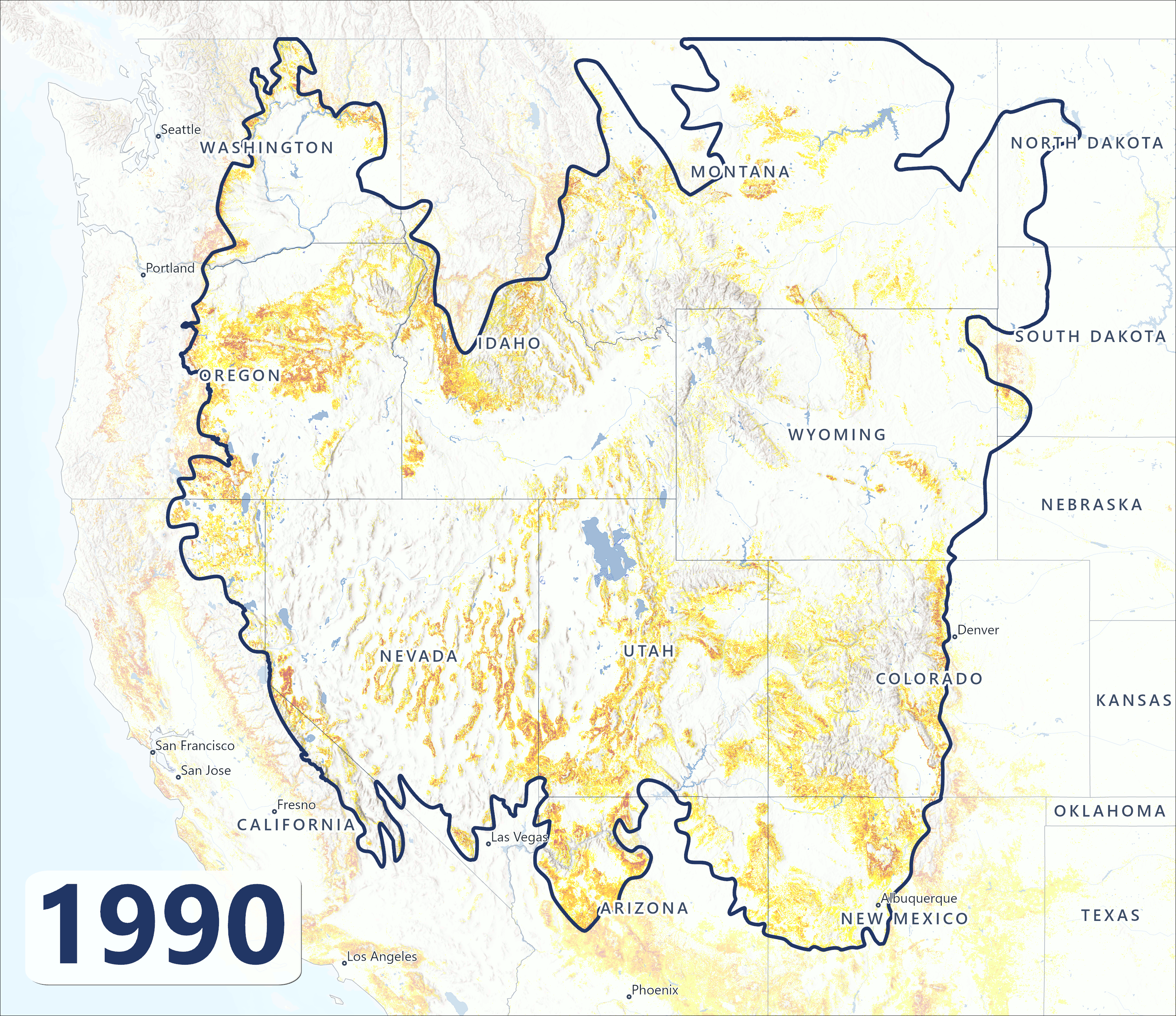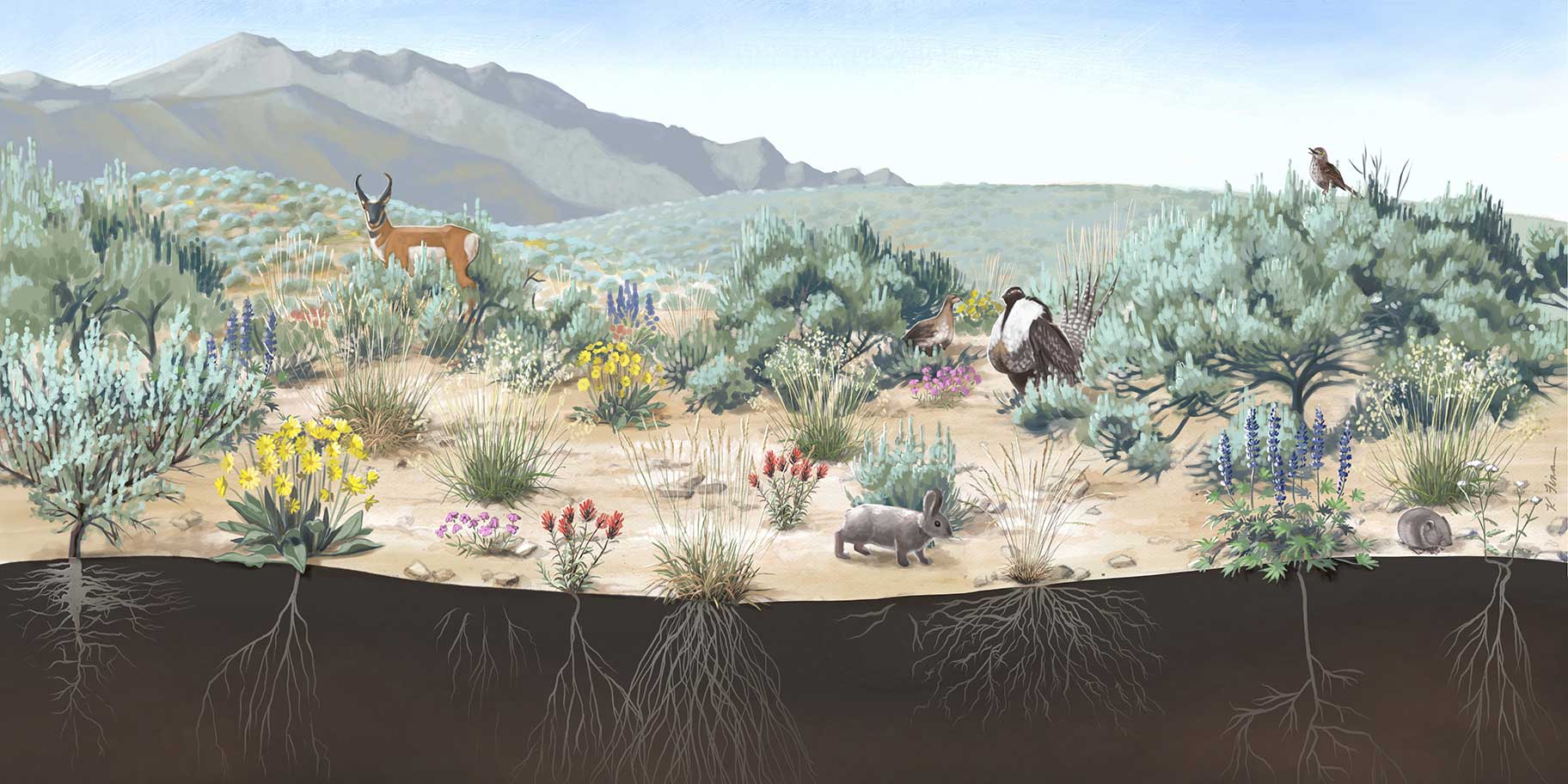Around the world, woodlands and forests are replacing native grasslands and shrublands which impacts wildlife and people. In the sagebrush biome of the American West, pinyon pine, juniper, and other native conifer trees are expanding into imperiled shrublands. Learn more about the implications of this woodland encroachment and what communities are doing to restore healthy and resilient shrublands.

Tree cover change across non-forest lands in the sagebrush biome in the western U.S. (1990-2020). Data: Rangeland Analysis Platform, Cartography: Eric Jensen, USDA-NRCS Working Lands for Wildlife
